#herodotus machine
Text
Florence Welch once said "hubris is a bitch" and I, Xerxes the great, really felt that
#tagamemnon#ancient history#xerxes#persian wars#xerxes i#xerxes the great#hellespontus#Herodotus#florence and the machine#Florence welch#music#100 years
79 notes
·
View notes
Text
I genuinely wonder how Himaruya managed to write Lithuania as both a pathetic trembling scared of russia creature and "a murder sword machine on the battlefield." Both are wrong; and since I already explained why the first image is wrong, then, I think, it's time to talk about the second.
Indigenous Lithuanian land or Lietuva, is actually not so big. In preGDL and GDL times, it was shifted more to the East (now those territories are mostly Belaruthian and a bit russian), so the sea coast was Baltic Prussian, Skalovian, Curonian, etc. Those people spoke very similar to modern Lithuanian languages (well, from my point of view as a non-native speaker) because they were all Baltics, but there weren't Lithuanian.
So, since there were not many Lithuanians, and no sea, therefore, no so big cultural and economic exchange with neighbours as in, e.g., Curonia - there was a delayed access to new technologies, including military. And of course, not a single nation is gonna give you their technologies for free. No new modern technologies or people - no superiority in pure military power. No superiority in pure military power - no victory in protecting your land or in colonisation... if you use the "murder machine" tactics. You're just gonna lose your people, and you can't afford that. Therefore, you have to develop in another direction.
I want to give an example from the history of my country. Hundreds of years ago, 513 BC, the Persian king Darius I, with a large army and fleet, began a campaign to conquer Scythia. Darius I Hystaspes sought to extend the Persian Empire to the entire cultural world of that time and, in particular, to subjugate the Black Sea colonies of the Greeks and thereby seize control over the Black Sea trade, especially over the arrival of the Scythian bread that Greece needed.
Darius had thousands of thousands of people; Herodotus reports the following about the size of the Persian army: "The army, without the navy, numbered 700,000 together with the cavalry, and six hundred ships were assembled". The Persians were blinded by their success - they had not known military failures.
Having learned about the thousands of Darius's army, which ended up in their territory, the Scythians held a military meeting - all the tribes were gathered, including their allied Sauromatians, Taury, Ahathirsy, Gelonians and Budyny. Some tribes, such as the Androphages, refused the Scythians' offer, feeling relatively safe. They blamed the Scythians for the campaign against Media and did not want to risk their own peace and well-being. Some historians believe that it is possible that Darius I tried to prevent the unification of the forces of the Scythians and their neighbors and previously sent a message to the kings of all the tribes neighboring Scythia that he was going to war only against the Scythians and was not going to conquer anyone else.
Therefore, the Scythians decided not to engage in close combat with Darius, but to lure him as far as possible from the crossing into the boundless Scythian steppes by making periodic counter-attacks. They sent the women and children and all the livestock far ahead. The Scythians left with them only as much cattle as they needed to feed the detachment. The Scythians also filled up all the wells and springs, set fire to the steppe, and destroyed vegetation in order to deprive the enemy of any benefits and make it difficult for him to move. In history, this military tactic was called "Scorched Earth Tactics". And it fully justified itself. With such a large numerical superiority of the Persians, the Scythians could not afford to go into an open battle. And they completely exhausted the enemy - both psychologically and physically.
The Scythian troops carried out a "psychic attack" - constantly appearing and teasing the enemy, avoiding direct contact, staying at a distance of a day's march, luring the Persians to them, while leaving their livestock - not letting them die of starvation. Darius tried with all his might in his nerves to pursue them, leading the army as fast as possible, but the Scythians were out of reach. According to some researchers, the Scythians used stone mounds (tombs) with grottoes and caves as a shelter, which disoriented the enemy.
Constant active movements, lack of combat as such, depletion of provisions and supplies brought the Persians closer to defeat. Finally, the army of Darius, pursuing the Scythian horsemen, entered the territory of the same Androphages and other tribes who had previously refused to fight on the side of the Scythians. Seeing the advancing Scythians in their lands, some of them continued the tactics started by the Scythians, while others resorted to more radical actions, such as the Androphages, who were "famous" for cannibalism.
According to Herodotus, Darius finally decided to retreat after one significant incident. He sent a messenger to the Scythian general Idanfirs, conveying the following:
"Strange person, why do you run away like a hare, although you have the opportunity to do one of two things? After all, if you think that you yourself are capable of resisting my power, you should stop wandering, fight, and when you realize that you are weaker, then even then, cease to flee and carry land and water as a gift to your lord, come for negotiations".
In response, a messenger arrived to Darius with an unusual message:
My affairs, o Perses, are thus: I have never run in fear from any man before, and now I do not run from you, and I do nothing new now compared to what I used to do in peacetime.
I will also explain why I do not engage in battle with you immediately. We have no cities, no cultivated land, and no fear that they will be captured and ruined. Nothing compels us to enter into battle with you sooner.
I did not come to your land, but you to mine. When I want, then I will compete with you by force. Now, if you found and spat on the sacred graves of our ancestors, then you would see whether we are scary rabbits or not.
The stubborn Persian king did not stop there and answered:
Foolish Scythian! Who taught you to fight so stupidly? I already told you: if you feel courage in your heart, stop and let's measure strength. No one in the world has ever beaten me! If you do not have the strength and courage in your heart, send me, your Lord, the usual gifts in this case: water in a silver jar and land on a golden cape. And I will admit you to me and, as a sign of supreme favour to you, I will allow you to kiss the toe of my black royal boot. I was and will be your Master, and you were and will remain my faithful slave!
Such arrogance and limitation somewhat angered the Scythian king Idanfris, and he ordered to immediately send Darius "gifts" - a bird, a mouse, a frog, and five arrows:
Enough has been said about the battle.
I consider only Zeus, my ancestor, and Hestia, queen of the Scythians, to be my lords.
And instead of gifts of land and water, I will send you such gifts as you deserve to receive. For the fact that you declared yourself my lord, you will have to sob.
This is the answer of the Scythians.
The Persians asked the messenger about the meaning of these mysterious gifts. He said that he was only ordered to give "presents" and added that if the Persians are so wise, let them figure out for themselves what they mean. This once again puzzled the Persians, and they did not immediately understand what it all really meant. Herodotus conveys the expressed assumptions: "Darius thought that the Scythians would give him themselves, and land, and water. He assumed this on the grounds that the mouse lives in the earth, feeding on the same cereals as man, the frog in the water, the bird most closely resembles a horse; the arrows mean that the Scythians are surrendering their military power."
In fact, these "gifts" of the Scythians meant something else, and the Persian commander Gobrius was the first to correctly interpret them:
If you, Persians, do not fly into the sky like birds, burrow deep into the earth like mice, or jump into the swamp like frogs, you will be killed by these arrows and will not return home.
And the Scythians, having brought "gifts", in the meantime did not waste time and went to active actions. We learn from Herodotus: "Meanwhile, one part of the Scythians, who had first been ordered to guard near Lake Meotida, and now went to the Istra for negotiations with the Ionians (Greeks), having arrived at the bridge, announced the following: "Men of the Ionians, we bring you freedom, if only you are willing to obey. We know that Darius ordered you to guard the bridge for only sixty days, and if he does not appear within that time, to retire to your homeland. Now you will not be guilty either to him or to us, if you do this: stay the appointed number of days, and then immediately depart, rejoicing that you are free, and feeling grateful to the gods and the Scythians. And the one who was once your master, we will bring to such a state that he will no longer go to war against anyone." When the Ionians seemed to agree to do so, the Scythians immediately hurried back."
In conclusion, with the onset of night of many nights, taking a select part of the army, and leaving the others - exhausted, sick, wounded and less needed to die, Darius marched back to the Istra (Danube) by forced march. In fact, treacherously betraying his own army, which for him was nothing more than consumables and a way of aggrandizement, he still managed to mislead the Scythians and retreat to a considerable distance.
Unfortunately, the Greeks did not keep their word. The Athenian Miltiades, the general and tyrant of the Chersonese, those on the Hellespont, offered to obey the Scythians and try to liberate Ionia. The proposal of the Miletus Histiaeus was the opposite of this. He said that now, thanks to Darius, each of them is the tyrant of the city, and if the power of Darius is overthrown, he himself will not be able to rule the Milesians, and no one else will be able to rule anyone. When Histiaeus made this point, everyone immediately agreed with his opinion, even though they had previously agreed with Miltiades.
Thus, Darius was lucky: the Greeks did not destroy the bridge and, waiting for the return of their master, helped him and his army to cross the Istra and reach Chersonese of Thrace, and from there - Asia Minor. The Scythians believed the Ionians (Greeks), so the Persians simply slipped away. After this incident, the Scythians began to judge the Ionians as vile cowards and born slaves who love their master and are not in the least inclined to resist. (c)
***
The same tactic was used by Lithuanians, although they didn't have the steppe but impenetrable forests: and in such natural conditions, it is much more profitable to use bows or crossbows. Lithuanians climb trees a lot, and many Lithuanians, as well as Belaruthians, are very good snipers. Swordsmen were mostly mercenary warriors, and they created a reputation, but it doesn't mean that the whole nation was like this. Where do you think the tales about Laumė and "forest gods which will punish you" come from? If you want to learn more about someone's war tactics, go into their mythology. Lithuanians resisted Teutons using the "Scythian" tactic for a loooooong time, until Prussia and modern Latvia were completely captured and it was the time to change. In order not to become completely engrossed, they had to seek support from the South, and that's how Grand Dutchy of Lithuania was born. I am 100% sure that the Lithuanians were not happy about having to bravely risk their lives in an open field.
Some bonus facts:
A LOT of Lithuanians are fans of Tolkien and elves.
Gintaras Beresnevičius says that Lithuanian religion and culture exchanged influences with Scythians as well
All of Lithuania's neighbours describe them as very cunning. They're not like naive Belaruthians, they're not grandiose like Polish, they're not hot-heads like Ukrainians, and if course they are not stupid in their insolence and megalomania like russians. Latvians have a word for Lithuanians, which is "viltīgi" and means "cunning"... in a bit negative way. XD
#Lessons with Unhonestly Mirror: basic principles of war tactics#history#Lithuania#Scythia#hetalia#hws lithuania#aph lithuania#Ukraine
11 notes
·
View notes
Text
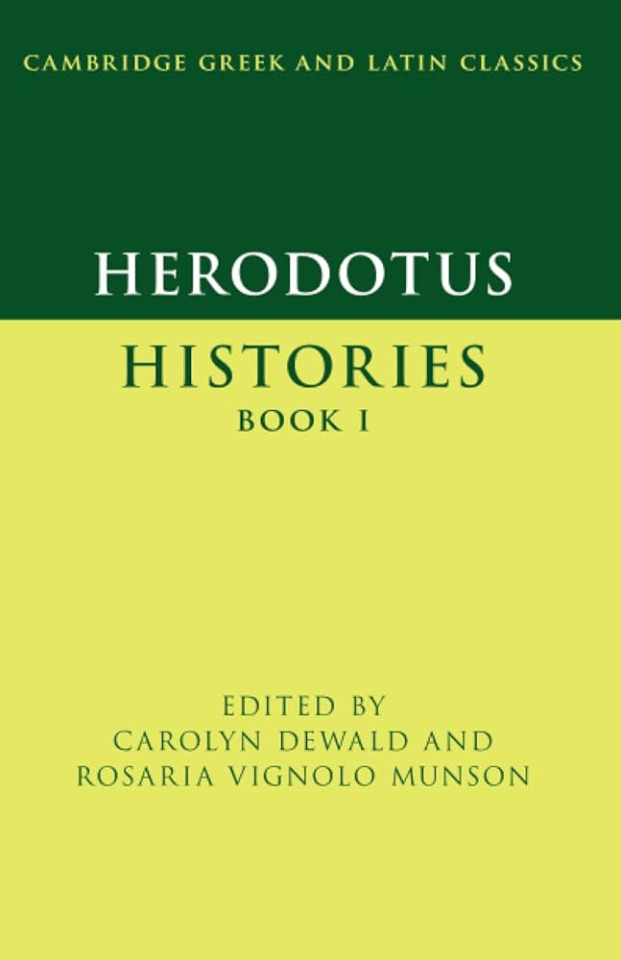
Edited with Introduction and Notes by Carolyn Dewald, Bard College, New York, Rosaria Vignolo Munson, Swarthmore College, Pennsylvania
Published 2022
Description
In the Histories, which could loosely be translated as 'Investigations' or 'Researches,' Herodotus tells how the Persian Empire began, grew, and then met defeat in Greece in his parents' generation. Book 1 begins that story. It introduces both the world in which the Persian imperial war machine began to operate and then expanded, and Herodotus' own procedures in undertaking the ambitious task he has set himself. This edition helps intermediate and advanced students to read the book in the original Greek and will also be of interest to advanced scholars. The Commentary provides information about dialect, grammatical forms, syntax, and other properties of his language. In addition, the Introduction and the Commentary engage in literary interpretation and explore Herodotus' value as a historian, his immense curiosity, and the attention he devotes to the customs, beliefs, concrete realities, and myths of other cultures.
From the website of Cambridge University Press.
9 notes
·
View notes
Text
Western Hoplites versus Asian Hordes?
Upon my finishing of reading Xenophon’s Anabasis, I found one of my edition’s appendices—written by classical scholar Tim Rood—regarding the legacy of Anabasis quite interesting:
The trend of comparing Anabasis with modern expeditions continues in the twenty-first century. One of the first accounts published after the Anglo-American invasion of Iraq in 2003 was entitled The March Up and inspired by Anabasis. This account presents the modern US Marines as the Ten Thousand reincarnated: they are "today's hoplites," "the inheritors of Xenophon's code of bravery and camaraderie." At the same time, such scholars as Victor Davis Hanson have achieved a huge following with works that openly exploit ancient history for political arguments about the present; Hanson, as the title of his 2001 best seller puts it, has even claimed that the qualities displayed by the Ten Thousand can help explain "Why the West Has Won." — The Landmark Xenophon's Anabasis, Appendix R
I found myself agreeing with the acknowledgement of the West’s frequent comparisons between itself and Greek hoplites. However, I do believe this trend is also deeply inspired by Herodotus, in particular with his description of the Battle of Thermopylae.
Herodotus, of course, recounted the deeds of 300 brave Spartans (and several thousands of their helots) against millions of soldiers from the combined Persian army. The Spartans, who were known for their ability to produce the finest warriors through an intense training program and what might as well been a state eugenics program, successfully held off the Persians, who were numerated and delineated by their various ethnicities (for example, Persians, Medians, Scythians, Egyptians, and many more), for days before being defeated by the actions of a traitor. The Spartans achieved this with their aforementioned training, superior arms and armor, and tactical position between the Hot Gates. The Persians are portrayed as an invading horde made of all the peoples of Asia, clumsy and so uninspired to attack such a well fortified position for days, taking many losses. This was one of the first, if not the first, accounts of conflicts between East and West, and I am convinced that it has proved to be influential.
This dichotomy, of well-trained and well-equipped Western armies prevailing over stupid and nearly suicidal Asian armies has persisted even to the modern era. Western pop history is wont to apply a “Greco-Persian dichotomy” to many conflicts. I can relate two popular examples.
The Eastern Front of World War II has been imagined as similar to the Greco-Persian conflicts in the popular conscious. The German army inflicted mass and disproportionate casualties to the Soviet Red Army, which has been commonly portrayed as Asian in racist attempts to dehumanize it (laypeople today often say that Slavic peoples are not White). As such, the Germans represent the Greeks, but instead of the metal armor, hoplon shield, and double pointed spear, their equipment consisted of the famous MG 42, Tiger tank, and Stuka dive bomber. Instead of displaying martial brilliance by holding the position at the Hot Gates, the Germans are known for inventing the Blitzkrieg strategy that gave them such success between 1939-1940. The Spartan comparison goes further when one remembers that the mythos of the German soldier was that he had superior training and discipline, no doubt in relation to his state’s eugenics program.
Meanwhile, depictions of the Red Army are appalling. Westerners are most well-acquainted with several popular stories of Soviets going into battle charging the German lines lacking even a rifle, rather drowning the Germans in “human waves.” The Red Army supposedly consisted of primarily unwilling and dumb conscripts, who were forced into battle by political commissars who would machine-gun down any cowards. This is quite similar to the Greek stereotyping of Persians, who supposedly led their armies with whips. These stories have been most infamously related in the movie Enemy at the Gates and the video game Call of Duty: World at War. (It should be noted that I do not deny the fact that these stories regarding the Soviets happened, but I recognize that they were not the norm.) Thus, the Soviets are the Persians in this dichotomy, and further habit to differentiate individual Soviets based on their ethnic origin (for example, Russians, Georgians, Kazakhs, and many more) makes me more convinced in this comparison.
A second application of the Greco-Persian dichotomy is seen in the popular imagination of the Korean War. UN forces, who are the seen as the Greeks, were able to push back the North Koreans to the Chinese border with new and superior weaponry such as the M46 Patton and F-86 Sabre, while having superior training and discipline by virtue of being led by seasoned WWII NCOs and officers, along with a certain General MacArthur, whose daring landing at Inchon is forever to be known as a moment of military genius that turned the tide of the war in the UN’s favor. This success would be quickly turned around when what is commonly described as a “horde” of Chinese became involved in the war and crossed over into Korea. The North Korean and Chinese used poor and outdated equipment, and resorted to “human wave” tactics, smartly choosing to charge and engage the UN forces in close quarters. It is again obvious that the Communist side has obtained the specter of the Persians.
We come back to the beginning quote of this post. Again, the Greco-Persian dichotomy is explicity applied to a conflict involving East versus West. American hoplites, with all the toys of modern war, versus an untrained and underequipped Iraqi army.
It seems that whenever a war or conflict involving Westerners fighting Easterners occurs, Westerners often take it upon themselves to describe themselves as having the superior training, tactics, and equipment, while the Easterners, depicted as stupid, untrained, and barbaric, have only superior numbers, or the “horde.” Intentionally or unintentionally, these comparisons bring back the legacy of the Greco-Persian conflicts, including the action at Thermopylae and the story of Xenophon’s Anabasis. Herodotus and Xenophon can be said to have perhaps laid the groundwork for the popular historiography of Europeans in conflict with Asians due to the repeating patterns seen in the topic’s pop history.
6 notes
·
View notes
Text
The Sphinx And Its Mysteries

The Sphinx
The Great Sphinx of Giza is situated on the Giza Plateau adjacent to the Great Pyramids on the west bank of the Nile River and faces east. The construction date is unknown; some say it dates back to between 2600 and 2500 BCE. Here are some of the 20th-century geologists who claimed evidence of water erosion in and around the Sphinx enclosure, which would prove that the Sphinx predates Khafra at around 10000 to 5000 BCE.
Some believe there are, in fact, many secrets beneath the Great Sphinx of Giza, namely the Hall of Records, a library entirely of hidden information.
The Hall of Records
The Hall of Records houses documents, scrolls, and other materials with information regarding the lost continent of Atlantis and extraterrestrials. Some believe the hall replicates works from the lost Library of Alexandria. The discovery of the Hall of Records would significantly affect our understanding of world history, precisely the origin of Ancient Egyptian civilizations.
The existence of such an underground library was referenced by Herodotus, who said in Histories'', Book II, 148:
"This I have seen, a work beyond words. For if anyone put together the buildings of the Greeks and display of their labors, they would seem lesser in both effort and expense to this labyrinth … Even the pyramids are beyond words, and each was equal to many and mighty works of the Greeks. Yet the labyrinth surpasses even the pyramids."
Roswell and hieroglyphs
Ancient Egyptian hieroglyphs include simple " pictorial glyphs" and strange flying machines and humanoid beings. Fewer people know that the same hieroglyphs have also appeared on modern-day unidentified flying objects.

The 1947 Roswell UFO crash and the 1980 Rendlesham UFO Incident are associated with hieroglyphs similar to those in Ancient Egypt. The grandchildren of Major General Jesse Marcel, the man who oversaw the cleanup of the debris from the 1947 crash, shared riveting new details about the event. One of those details was that geometric symbols appeared on the Roswell crash debris, including a triangle with a sphere on top.
Similar symbols have appeared in Roswell, modern-day crop circles, and alien abduction accounts. The "sacred geometry" theory holds that the universe (or God) has a geometric code or language.
Mars
Science is now showing that Mars wasn'twasn't always and isn'tisn't the dry, red, arid planet we've all been told it is; this theory was amplified recently by a team of Italian scientists, who are telling the world that they have strong evidence of a subsurface lake of liquid water on Mars.

The more we observe Mars, the more information we get that it is a fascinating planet. From the Curiosity Rover, we now know that Mars once was a planet very much like Earth, with long salty seas, freshwater lakes, probably snow-capped peaks, clouds, and a water cycle just like we're studying here on Earth…Something has happened to Mars; it lost its waster—Grunsfeld.
In 2015, NASA held a press conference to announce the significant discovery that Mars experienced a massive climate shift and used to be very Earth-like, covered in oceans and greenery. At this conference, scientists also stated that "the possibility of life in the interior of Mars has always been very high. There's certainly water somewhere in the crust of Mars.
Boriska Kipriyanovich
Boriska Kipriyanovich alleged he lived on the red planet before being reborn on Earth on an apparent mission to save humanity.
His mother is a doctor and says she knew he was unique from birth. He started speaking after a few months, and by age one, Boriska could read, draw, and paint. While in kindergarten at just two, his teachers couldn't help but notice his incredible writing, language talents, and astonishing memory skills. The boy has repeatedly claimed he was previously a Martian pilot who traveled to Earth.
He claims his race of Martians was wiped out in a nuclear conflict thousands of years ago, and he fears we are now heading in the same direction. Boriska's concerns come as our own rapidly expanding atomic weapons programs. He warns that we will face the same catastrophic fate as his people if we don't listen to his warnings. He says he is not the only child from outer space on Earth and that others like him were sent here on a specific mission to save humanity. He claims they are all reincarnations and are called "Indigo Children."
"We could travel in time and space flying in round spaceships, but we would observe life on Earth on triangular aircraft. Martian spaceships are very complicated.
He insists there is much more to be discovered on Earth, pointing to the Great Pyramid of Giza, which hides big secrets. "Human life will change when the Sphinx is opened. It has an opening mechanism behind the ear; I am trying to remember precisely, claims Boriska.
According to a University of Arizona website report, a series of expeditions took place between 1991 and 1993, led by an independent Egyptologist named John Anthony West, who conducted seismic and geological surveys around the Great Sphinx.
Their findings indicated that the Sphinx's erosion pattern suggests it was carved at the end of the last Ice Age when heavy rains fell in the eastern Sahara—more than 12,000 years ago—not 4,500, as is widely believed. Seismic surveys from their research also suggested unexplored tunnels and cavities in the bedrock beneath the Sphinx, including a large rectangular chamber 25 feet beneath the monument's front paws.
Coverup
"Yes, there have been crashed craft, and bodies have been recovered. . . . We are not alone in the universe; they have been coming here for a long time. . . . I am privileged enough to know that we have visited this planet and that the UFO phenomenon is natural.
– Doctor Edgar Mitchell, 6th man to walk on the moon.
Longtime U.S. Army veteran Colonel Philip James Corso published a book titled The Day After Roswell, in which he details the information and other aspects about the bodies and extraterrestrial technology that were recovered.
The craft featured handprints like those in the picture below. According to Tom Delonge in a podcast he did with Joe Rogan, these pictures are the real deal. When it came time to back-engineer the craft, no engine was discovered. Still, pilots placed their humanoid hands in these slots. They guided the craft using their minds—a type of telepathic technology that we have yet to discover.
Paul Hellyer, Canada's former Minister of National Defence: "Decades ago, visitors from other planets warned us about where we were headed and offered to help. But instead, we, or at least some of us, interpreted their visits as a threat and decided to shoot first and ask questions after."
Sphinx on Mars
NASA has been beaming photos from space since their mobile robot Curiosity landed there in August 2012. Joe White noticed a chunk of rock in the footage, which looked bizarrely like an enormous, long statue, complete with a head.
I was astounded at the giant head detail when I looked at this NASA image. The door-like archway to the right of the possible sphinx head also caught my eye. I darkened the picture to see if that would help, and the detail just jumped off the screen at me.

John Brandenburg, a well-known and respected plasma physicist, joined several colleagues in blowing the whistle on the need for disclosure. They argue there are things " out there" that have been deliberately kept from us. Whether this information has been concealed because the human race is not ready for it, that it's just too "mind-altering" and would change too many things, or because its disclosure would threaten various corporate interests remains unclear and too broad a subject to tackle here. According to Brandenburg, there was a nuclear blast that completely changed the planet.
Brandenburg hypothesizes that these nuclear isotopes can be detected because of a sizeable atomic blast. This blast was responsible for the atmospheric shift seen on Mars, and according to Brandenburg, another civilization living on Mars at the time is likely responsible.
An enlargement of the Aztec Head appears to be a damaged carving depicting a distorted human face with ornaments. In the author's opinion, this object is a carved artifact. Its presence on Mars is entirely consistent with the Cydonian Hypothesis of a widespread humanoid civilization that dates from a long Earth-like climate on Mars.
#aliens#history#science#ufology#mytholog#religions#space#news#writers on tumblr#forbidden knowledge#conspiracies#conspiracy theories#truth reading
0 notes
Text
First hypothesis on who built the pyramids
The secret of how the blokes were lifted up to the pyramid's top remains unknown. According to National Geographic Magazine around 2.3 million stone blocks were used to build the pyramids; each block weighs an average of 2.5 to 15 tons. Egyptologists have suggested many theories on how the blocks were lifted up the sides of the pyramids. The most famous theory is the 1987 Martin Isler theory in his book ‘on pyramid. Building II’ that suggests that a simple machine using levers and counterweight was used to lift the blocks. This theory, inspired by the Greek Historian Herodotus' explanation of how the blocks were lifted. However, Isler`s theory was criticized by J.P. Lepré in his book ‘The Egyptian Pyramids: A Comprehensive, Illustrated Reference.’ He said that this method can only lift the heavy block until the fifth course, Suggesting that another lifting method was used to lift the block for the other 196 courses.
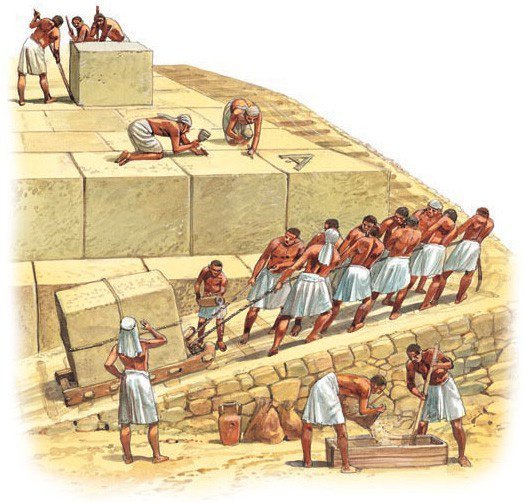
The second theory of how the blocks were elevated was from James Frederic Edwards in his Article ‘Building the Great Pyramid: Probable Construction Methods Employed at Giza’ published in 2003. The article contained a built model suggesting that blocks were levered onto wooden sleds and using wet sand to reduce the friction beneath the between the blocks and the wooden sleds, which make it easier for a team of people to move the heavy blocks up the sides of the pyramids. However, this theory does not have a major support inside the Egyptologist community. All we are certain of is that a single ramp was found at one of the unfinished ancient Egyptian temples, and there are also remains of ramps found at a couple of pyramid sites.

0 notes
Text
Running into Pheidippides (490 BCE)
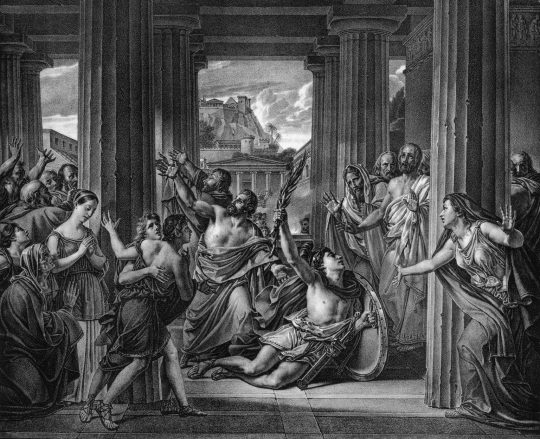
As my time machine crashed near Athens, I saw a middle-aged man with a maximal, muscular body. That man came to be Pheidippides, the infamous courier who had run from Marathon to Athens to inform the Athenians about the incoming battle of Marathon. As we talked about multiple things, including the great city of Athens, he told me a bit about the city’s culture. Initially, when I asked him about Marathon, he quickly told me it was a parish, not a city. I remember Pausanias stated in his “Descriptions of Greece,” where he says, “There is a parish called Marathon, equally distant from Athens…” (Pausanias).
The conversation fell short as he told me he had to go to Athens to give an important message. As I saw him shout the message to the city, he collapsed to the ground and never got up again. According to Herodotus’s stories, he died after he said his statement.
As I walk through the streets of Athens, I see, hear, smell, and taste so many things in a few minutes. When I was walking, a group of guys was joking around with one another over a bald man. In the San Diego State University author and associate professor Walter D. Penrose Jr.’s publication on the discourse of disability in ancient Greece, he mentions how baldness “was seen as a deformity of sorts in the ancient world, one which was joked about…” (Penrose 505). Aristotle was the one who associated baldness as a deformity, which shows us a particular view of how the Athenians viewed disability in the Classical Age. In his publication, he argues that while there were no specializations of a specific disability shown in ancient history, signs of “pity, charity, and categorization” were present.
After researching his claim, I argue that they did not show signs of pity but showed signs of ignorance; by hiding it with jokes or humor. The ancient Greeks, including Athens and Sparta, did not give access to their disabled persons, mainly because of the class structure of the city-states. Either way, I saw many things on my way through Athens. I visited various monuments, including the Temple of Aphaia, the Odeon of Herodes Atticus, and more. I’m still trying to see if I can see anything related to Pythagoras, as that is my last name! But wait, someone is bringing me in to see the case of Timarchus? I’m in!
In this text, author, and associate professor from San Diego State University, Walter D. Penrose Jr, talks about how Greek society treated disability in ancient Greece. Penrose specializes in the History of Gender and Sexuality in Ancient Greek, Hellenistic, and South Asian contexts. With his interest in disability studies, he put immeasurable research into his publication, “The Discourse of Disability in Ancient Greece.” He argues while there were not any specializations of a specific disability shown in ancient history, there were signs of “pity, charity, and categorization” which were present. Penrose complemented his argument with evidence from multiple primary sources included in the publication, one example being how the Greek author Plutarch described how the Greek government should not have the “disabled” in the military or politics.
Sources:
(n.d.-b). The Academy Of Athens. Theoi Texts Library. Retrieved October 30, 2022, from https://www.theoi.com/Text/Pausanias1C.htmlPenrose, W. D. (2015).
The Discourse of Disability in Ancient Greece. The Classical World, 108(4), 499–523. http://www.jstor.org/stable/24699780
0 notes
Text
A declining number of girls attend their proms with gloves
As time passed, the complexity and versatility of gloves evolved. If you have ever experienced wearing a glove that your hands are too big for, imagine what these women had to go through! Buttonhook and powdered alum provided some lubrication. Cloth and leather gauntlets display intricate embroideries. Ladies in the 19th century adored opera gloves. But still, before an China Fitness gloves Wholesale opera, determined women would sit for hours, coaxing their hands down into tight little gloves. Some knights were even noted to wear mail gloves under their plated gauntlets for added protection. In “The History of Herodotus,” written in 440 BC, Herodotus describes how Leotychides was given a bribe in the form of a gauntlet overflowing with silver, which later incriminated him. The first gloves resembled crude mittens.
They continue to be an essentially integral part of many jobs today. Pronounced fingers were stitched in to provide more dexterity and ease of movement.Fashion shops onlineis a fickle thing, and only time will tell the future of the glove.Now, if we look into the fashion world, we see a marvelous array of styles. Conversely, there has also been a sharp decline in its use as fashion accessories over the past decades.Gloves are seen in ancient writings, such as Homer's “The Odyssey,” in which Laertes is said to wear gloves in his garden so he could avoid the brambles.” The book, while entirely in French, reveals many patterns and reveals a short development and history of the glove. One of the more revered in existence today is “Le Gant. As centuries passed, glove making became more of a refined art. Also included are passages stating the period's social relevance and sexual significance in relation to the glove.
An old and reclusive art, glove making has been associated with human culture since the time of the caveman.Insulation from the heat or cold, protection from scratches and cuts, in the instigation of duels, for bold or minute fashion statements, gloves have worn many hats, so to speak, throughout history. Plated gauntlets were dated back as far as the early 14th century. There is some debate over the translation of this text. A declining number of girls attend their proms with gloves. Fewer still are the patterns available for hand-made gloves.A few books remain that provide us with real insights of early gloves. This forced one's hand to rest in a half cupped position, which is perfect for greeting, but not for kissing. One peculiarity is they tried to fit their hands into gloves a size too small. And before that, mail gloves were worn. Machine-sewn and hand-finished gloves are mostly what you'll now find infashion shops online. When glove makers' guilds once dominated a society obsessed with a covered hand, today, very few remain.
0 notes
Text
anybody else hate it when their body goes anxiety mode for no got damn reason
#i’m literally just watching a video about herodotus why do i feel like i’m going to pass out#stress hormone machine broke#ashe speaks
34 notes
·
View notes
Text
Can't read writings by ancient greeks for class because I get too distracted thinking about how if I went back in time with a fog machine and some sort of bluetooth speaker playing the opening notes to white room by cream real loud they'd probably erect a marble statue for me on the spot. I could show herodotus a neon pink leopard print slap bracelet and his brain would just melt out of his skull
86 notes
·
View notes
Text
mechanisms fiction!
also known as: i read all the fiction so you don’t have to!
under the cut: summaries of each fiction, word count, and content warnings! the summaries are of my own writing, and unlike the ones on the website, i’ve opted for useful rather than intriguing. i’ve also ordered the list to make a bit more sense/fit better timeline-wise!
some of the fiction has an audio version; i’ve included links to TheVoidSings’ lyric videos of said audio where applicable!
i’ve put the ones with relevant lore in bold, the ones i personally like in italics, and i’ve put a * after all the ones that include the mechs!
AURORA AND THE CREW
breakup*
summary: nastya and aurora have an argument and then both go off to sulk. mostly focuses on nastya. interesting thing: scuzz is in this one!
word count: 707
content warnings: implied nsfw
the story of the toy soldier*
summary: it’s the toy soldier’s backstory! covers what’s probably at least a decade and has a lot of lore! also has illustrations, most likely courtesy of ts!
word count: 605
content warnings: murder, images of choking, implied rape
who killed doctor carmilla?*
summary: carmilla’s just been pushed out an airlock and various mechanisms are going around trying to get an alibi out of everyone.
word count: 647
content warnings: n/a
interview transcript 34/08/7012*
summary: a police officer attempts to interview jonny when he’s in prison. includes a lot of information about him that’s nice to have for characterization!
word count: 782
content warnings: discussed murder, including child murder; attempted suicide
archive footage*
summary: an ivy character study, pretty much! goes into her fucked up brain and how it works. one of my personal favorites, as it’s very well written.
word count: 1390
content warnings: death, minor blood/gore
octokittens*
summary: a short one-off featuring some ashes and jonny banter!
word count: 208
content warnings: guns, animal death
feeding the octokittens*
summary: another one-off: this one has some quality tim, ivy, and nastya content. very fun!
word count: 455
content warnings: animal death
tales of the blogbot*
summary: comes off as an odd fiction, addressing the ‘blogbot’, the thing that used to send out the updates on the mechs mailing list (among other things) and makes passive-aggressive comments about them occasionally. goes through a few answers to what the bot is, and comes to no conclusion, but directly links to the next fiction in my list, ‘ghost in the machine’.
word count: 988
content warnings: referenced mass murder, implied nsfw
ghost in the machine*
summary: what happened to aurora’s programmer when jonny and carmilla took over ‘her’ ship (which is explained/expanded on in ‘how the aurora was won’); lots of aurora lore, as well as a more close view into the actual atrocities the mechanisms commit.
word count: 1152
content warnings: death
how the aurora was won*
jonny steals the aurora from the cyberian navy, in the most unsettling way possible!
word count: 631
content warnings: suicide, graphic depictions of violence
a bedtime story*
some fluffy nastyaurora for the soul!
word count: 326
content warnings: n/a
drive the cold winter away*
part of a group with cyberian demons and nomadic spacers! i think i’ve arranged them chronologically, but might have messed it up.
nastya visits the ruins of cyberia. jonny and ashes are there.
word count: 432
content warnings: n/a
cyberian demons*
a nastya character study- reflections on her memories, as she works on destroying what is left of cyberia.
word count: 1699
content warnings: blood, violence
nomadic spacers*
an outsider pov on the events of ‘drive the cold winter away’ and ‘cyberian demons’.
word count: 1120
content warnings: death
out*
nastya leaves the mechanisms for good after she finds her love, aurora, is no longer who she once was; presumably, this is her death.
word count: 1210
content warnings: suicide
ONCE UPON A TIME [IN SPACE]
gingerbread
hansel and gretal’s villain origin story! (they were the scientists speaking in ‘the twins’)
word count: 609
content warnings: child neglect, murder, needles/syringes
midnight
a bit of a cinders character study/some more of her backstory!
word count: 628
content warnings: n/a
mirror, mirror (audio version here!)
post-pump shanty/snow’s flight. the beginning of snow’s descent into a worse person, and how it overlaps with the myth of snow white/how she begins to take on the role of the evil queen.
word count: 860
content warnings: smoking
a fireside chat
a radio broadcast by scheherazade, king cole’s chief propaganda minister.
word count: 842
content warnings: mentions of concentration camps, death, and bombings
a rebel yell (audio version here!)
counter to ‘a fireside chat’- a radio broadcast by tom thumb, the voice of the rebellion! one of my personal favorites, as it’s very funny.
word count: 574
content warnings: mentions of mass murder
chapter’s end*
mad jack spratt and jonny d’ville play cards.
word count: 790
content warnings: discussions of death
by any other name
basically all the lore around briar rose, in a form of a report by hood, the rebellion’s hacker!
word count: 2023
content warnings: murder, graphic depictions of violence
this little piggy
all of the (incredibly fucked up) lore around the three little pigs!
word count: 993
content warnings: child abuse, brainwashing, non-consensual body modification, medical abuse (it’s a very intense one, please stay safe!)
what big eyes
all the lore we have on hood, in the form of king cole’s intelligence officers trying to figure it out.
word count: 1946
content warnings: mentions of war crimes and death
in the army*
the toy soldier and a group of rose reds hang out in a bar together! it’s a very fun one, with lots of banter! presumably takes place before the toy soldier met the mechanisms, but we don’t know that for sure. lots of lore about the rose reds, as well!
word count: 707
content warnings: mentions of war crimes and death
true love
colonel belle’s report on her efforts to manipulate adam ‘the beast’ bete into joining the resistance. (the mechs’ take on beauty and the beast). also a small bit of lore about rose!
word count: 1151
content warnings: manipulation, torture, unhealthy relationships
one thousand and two
a character study of scheherazade- the thoughts running through her head as rebels are about to find and kill her.
word count: 2236
content warnings: suicide; mentions of torture, concentration camps, and child death
ever after*
you know how jonny was being annoyingly cryptic about what happened to briar rose! well, they have a fiction that says!
word count: 680
content warnings: graphic depictions of violence
ULYSSES DIES AT DAWN
you’ll have to tell us the story sometime*
the mechanisms explore the ruins of the city, thousands of years after the events of ulysses dies at dawn!
word count: 469
content warnings: n/a
death in the metropolis
not anything super relevant- a news article about gang violence and the increased shifts for acheron workers as a result, setting a bit of a mood for the city as a whole. establishes hermes’ role in olympus.
word count: 547
content warnings: nothing to note, but there’s the background fucked-up-ness of the city going on and mentioned!
how not to die
another news article, this one focused on a group of people (’helljumpers’) trying to escape the acheron.
word count: 926
content warnings: suicide
fao: hermes – not urgent
a bit of a followup to the previous two fictions! the editor, herodotus, gets in trouble for discussing the helljumpers.
word count: 453
content warnings: n/a
orpheus, dionysus, muriatic acid and the strange whirring thing*
a look into orpheus’ character and how he ended up in the ulysses job! (mechs don’t heavily feature- just a note of the role brian took on, as well as mentions of ashes of course)
word count: 5017
content warnings: addiction, suicidal thoughts, police; implied nsfw, but only in the context of orpheus being a sex worker
orpheus and narcissus go to the seaside
i personally really love this one! it’s low-key the mechanisms’ take on the great gatsby- takes place a few years prior to the above fiction, and explores orpheus and narcissus’ friendship! it’s morbidly funny, with lots of very good banter/interaction!
word count: 6300
content warnings: eating disorders, addiction, implied nsfw (again in the context of sex work), suicidal thoughts, mental institutions (even if that’s not normally a problem for you, they get very dark and graphic, so be careful), non-consensual drugging; technically self-harm, but it’s a lighthearted joke
in the madness of war
how ulysses was forced into the war (a darker take on the story about him attempting to avoid it at first).
word count: 817
content warnings: n/a
the hacker’s mistake (a fiction to accompany prometheus)
prometheus is revealed as corrupt, but that doesn’t stop people from believing in him, so he is made an example of.
word count: 903
content warnings: torture
one of the chosen
another low-lore worldbuilding piece- this one about a teenage girl who gets conscripted to the acheron early.
word count: 824
content warnings: n/a (it’s fairly dark, though, so be careful).
eskhatos*
after the events of ulysses dies at dawn, the mechanisms leave, but not without causing a bit of chaos first.
word count: 464
content warnings: cannibalism
HIGH NOON OVER CAMELOT
the fastest shot
guinevere’s backstory!
word count: 792
content warnings: murder, child abuse, alcoholism
the sharpest aim
a western-style tall tale, starring lancelot!
word count: 1667
content warnings: relationship abuse, murder, violence
i will rule this town*
another personal favorite! expanding on ‘ten caliber railgun he got off a bandit in the flooded sectors’, it deals with arthur’s attempts to bring down nimue, the lady of the lake, and gain control! also has some lancelot/arthur/guinevere fluff, and a bit of an insight into his friendship with brian- as well as his original hopeful mindset, and how that diminished.
word count: 1488
content warnings: murder, drowning
the wake
morgan le fay (mordred’s surrogate mother)’s funeral, and mordred’s decision to go seek out camelot.
word count: 1045
content warnings: death (but only in the context of it being a funeral), cultural cannibalism
pellinore and the beast (audio version here)
this one’s a bit of an odd one- i’ve included it for the sake of completion, as it’s on the fiction list, but it’s just the lyrics to the mechs song pellinore and the beast? i’ve excluded the word count and content warnings for this one, as it’s literally just the lyrics. unsure of what to do here.
OTHER
the prisoner of dorian gray
the mechanisms’ take on the story of dorian grey! this one is part fiction, part song lyrics with a note of the tune they should be sung to.
word count: 1746
content warnings: suicide, torture
and that’s it! the fiction is all very good and well written, and i’d highly recommend reading at least a few of these!
103 notes
·
View notes
Text
A modern reconstruction of Herodotus Machine and its experimental testing



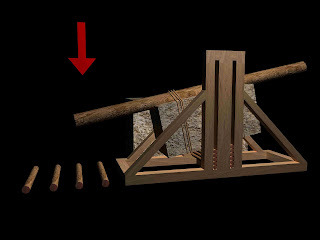
“HERODOTUS MACHINE – BUILDING PYRAMIDS
MACHINES CONSTRUCTRED OF SHORT WOOD PLANKS.
The “short woods machine” described by Herodotus, used to elevate blocks of stones for the construction of the pyramids in Egypt, was described as very light, so light in fact that the workers could have easily moved it from one step to the next of the pyramid.
The Egyptians did not know much of complex machines like those of the Greeks and Romans, nonetheless they knew of machines such as the balance or shaduf (used for agriculture), which used a system of counterweights to shift the weight near or on the central pivot.
As a result of our research carried out on several manuscripts from the de Architettura of Vitruvius, the architectural treatise of Francesco di Giorgio, we have not found any machine that might have such characteristics, but we noticed that in the codices of Leonardo da Vinci, there are two drawings which depict a machine that can match the descriptions given by Herodotus.
Described in Folio 818v of Codex Atlanticus, are different machines to raise columns, in particular one of these describes the elevation (lifting) of a column by oscillations, that is, by inserting in the central pivot of the machine some thick woods, thus helping to ‘elevate’ the column.
Folio 29r in Codex Madrid I depicts the same machine built with raw woods and ropes. The operation is the same as the previous design, but this machine designed by Leonardo seems to have very ancient origins, in fact it is very different from the other designs that appear in Codex Madrid I.
The drawing depicts a machine capable of lifting a large stone column. The machine is used by balancing a column on the central pivot where all the weight of the object was concentrated. By swinging the column to the right of the central pivot it created a space for a length of wood, thus contributing to the elevation desired. By swinging it again, to the left side, a new space was created this time to the right of the pivot, by inserting another length of wood the column was lifted a notch.
Since a similar machine had existed in ancient times we can show that with a small modification, the machine becomes very similar to that described by Herodotus. Most of the stones used in construction of the pyramids have a weight of between 2 to 3 tons, probably not far from the weight of the column depicted. But these are only hypotheses, that is why we did a test. The machine was designed to scale and tested during February 2011 with a cube of concrete weighing about 300 kg. Beyond our optimistic forecasts the machine (built to scale) not only enabled us to lift the concrete block, but made its application so easy that it was possible for a child of only 6 years to lift the stone.
Gabriele Niccolai”
youtube
Source:http://egyptianpyramidsecrets.blogspot.com/2012/09/herodotus-machine-buildingpyramids.html - Niccolai SNC Tecnoart Firenze
4 notes
·
View notes
Note
Mission to time machine back to Herodotus and shave his eyebrows and put a Kick Me sign on his back in three languages

16 notes
·
View notes
Text
Four amazing astronomical discoveries from ancient Greece
by Gareth Dorrian and Ian Whittaker

Earth and Moon as seen by the Galileo spacecraft. NASA
The Histories by Herodotus (484BC to 425BC) offers a remarkable window into the world as it was known to the ancient Greeks in the mid fifth century BC. Almost as interesting as what they knew, however, is what they did not know. This sets the baseline for the remarkable advances in their understanding over the next few centuries – simply relying on what they could observe with their own eyes.
Herodotus claimed that Africa was surrounded almost entirely by sea. How did he know this? He recounts the story of Phoenician sailors who were dispatched by King Neco II of Egypt (about 600BC), to sail around continental Africa, in a clockwise fashion, starting in the Red Sea. This story, if true, recounts the earliest known circumnavigation of Africa, but also contains an interesting insight into the astronomical knowledge of the ancient world.
The voyage took several years. Having rounded the southern tip of Africa, and following a westerly course, the sailors observed the Sun as being on their right hand side, above the northern horizon. This observation simply did not make sense at the time because they didn’t yet know that the Earth has a spherical shape, and that there is a southern hemisphere.
1. The planets orbit the Sun
A few centuries later, there had been a lot of progress. Aristarchus of Samos (310BC to 230BC) argued that the Sun was the “central fire” of the cosmos and he placed all of the then known planets in their correct order of distance around it. This is the earliest known heliocentric theory of the solar system.
Unfortunately, the original text in which he makes this argument has been lost to history, so we cannot know for certain how he worked it out. Aristarchus knew the Sun was much bigger than the Earth or the Moon, and he may have surmised that it should therefore have the central position in the solar system.
Nevertheless it is a jawdropping finding, especially when you consider that it wasn’t rediscovered until the 16th century, by Nicolaus Copernicus, who even acknowledged Aristarchus during the development of his own work.
2. The size of the Moon
One of Aristarchus’ books that did survive is about the sizes and distances of the Sun and Moon. In this remarkable treatise, Aristarchus laid out the earliest known attempted calculations of the relative sizes and distances to the Sun and Moon.
It had long been observed that the Sun and Moon appeared to be of the same apparent size in the sky, and that the Sun was further away. They realised this from solar eclipses, caused by the Moon passing in front of the Sun at a certain distance from Earth.
Also, at the instant when the Moon is at first or third quarter, Aristarchus reasoned that the Sun, Earth, and Moon would form a right-angled triangle.
As Pythagoras had determined how the lengths of triangle’s sides were related a couple of centuries earlier, Aristarchus used the triangle to estimate that the distance to the Sun was between 18 and 20 times the distance to the Moon. He also estimated that the size of the Moon was approximately one-third that of Earth, based on careful timing of lunar eclipses.
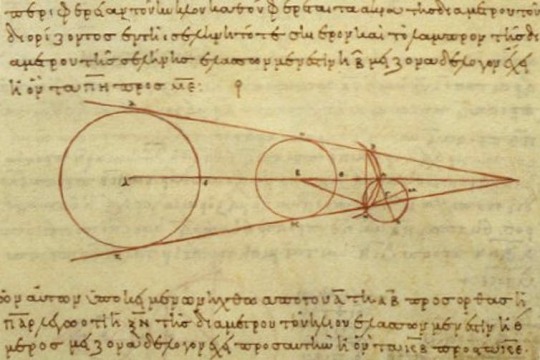
A 10th century reproduction of a diagram by Aristarchus showing some of the geometry he used in his calculations. wikipedia, CC BY-SA
While his estimated distance to the Sun was too low (the actual ratio is 390), on account of the lack of telescopic precision available at the time, the value for the ratio of the size of the Earth to the Moon is surprisingly accurate (the Moon has a diameter 0.27 times that of Earth).
Today, we know the size and distance to the moon accurately by a variety of means, including precise telescopes, radar observations and laser reflectors left on the surface by Apollo astronauts.
3. The Earth’s circumference
Eratosthenes (276BC to 195 BC) was chief librarian at the Great Library of Alexandria, and a keen experimentalist. Among his many achievements was the earliest known calculation of the circumference of the Earth. Pythagoras is generally regarded as the earliest proponent of a spherical Earth, although apparently not its size. Eratosthenes’ famous and yet simple method relied on measuring the different lengths of shadows cast by poles stuck vertically into the ground, at midday on the summer solstice, at different latitudes.
The Sun is sufficiently far away that, wherever its rays arrive at Earth, they are effectively parallel, as had previously been shown by Aristarchus. So the difference in the shadows demonstrated how much the Earth’s surface curved. Eratosthenes used this to estimate the Earth’s circumference as approximately 40,000km. This is within a couple of percent of the actual value, as established by modern geodesy (the science of the Earth’s shape).
Later, another scientist called Posidonius (135BC to 51BC) used a slightly different method and arrived at almost exactly the same answer. Posidonius lived on the island of Rhodes for much of his life. There he observed the bright star Canopus would lie very close to the horizon. However, when in Alexandria, in Egypt, he noted Canopus would ascend to some 7.5 degrees above the horizon.
Given that 7.5 degrees is 1/48th of a circle, he multiplied the distance from Rhodes to Alexandria by 48, and arrived at a value also of approximately 40,000km.
4. The first astronomical calculator
The world’s oldest surviving mechanical calculator is the Antikythera Mechanism. The amazing device was discovered in an ancient shipwreck off the Greek island of Antikythera in 1900.
The device is now fragmented by the passage of time, but when intact it would have appeared as a box housing dozens of finely machined bronze gear wheels. When manually rotated by a handle, the gears span dials on the exterior showing the phases of the Moon, the timing of lunar eclipses, and the positions of the five planets then known (Mercury, Venus, Mars, Jupiter, and Saturn) at different times of the year. This even accounted for their retrograde motion – an illusionary change in the movement of planets through the sky.
We don’t know who built it, but it dates to some time between the 3rd and 1st centuries BC, and may even have been the work of Archimedes. Gearing technology with the sophistication of the Antikythera mechanism was not seen again for a thousand years.
youtube
Sadly, the vast majority of these works were lost to history and our scientific awakening was delayed by millennia. As a tool for introducing scientific measurement, the techniques of Eratosthenes are relatively easy to perform and require no special equipment, allowing those just beginning their interest in science to understand by doing, experimenting and, ultimately, following in the foot steps some of the first scientists.
One can but speculate where our civilisation might be now if this ancient science had continued unabated.
About The Authors:
Gareth Dorrian is a Post Doctoral Research Fellow in Space Science at the University of Birmingham and Ian Whittaker is a Lecturer in Physics at Nottingham Trent University
This article is republished from The Conversation under a Creative Commons license.
9 notes
·
View notes
Text
#7yrsago Influencing Machine: Brook Gladstone's comic about media theory is serious but never dull
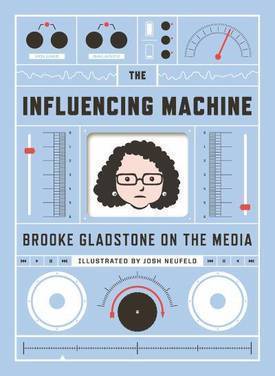
Brooke Gladstone, co-host of the excellent NPR-syndicated "On the Media," has teamed up with illustrator Josh Neufeld to produce a fantastic nonfiction comic book called The Influencing Machine: Brooke Gladstone on the Media. This is one of those books that feels like the author has been working up to it for her whole life, distilling all her varied experience and insight into one mind-opening, thought-provoking, and incredibly timely volume.
Influencing Machine begins with a history of the news, starting with Mayan scribes, Herodotus, and Julius Caesar's Acta Diurna (the original syndicated newsheet and the first widely distributed sensationalist tabloid), and then to the Anglo-American history of news, propaganda, bias, lies, censorship, bravery, principle, and truth. This fascinating history serves to introduce the major thesis of Influencing Machine: that the "media machine" that cynically distorts in order to serve the rich and powerful is a delusion. The reality is that the "media agenda" is an emergent phenomenon that arises spontaneously from commercial constraints, human frailty, state interference, and cognitive blindspots.
Gladstone's history of the best and worst of journalism is a prelude to an analysis of the present day, and the peculiar moment we inhabit, as partisan news -- once the dominant form of publishing, but long discredited and dormant -- begins to arise, just as the Internet is changing the way that news is gathered, reported, and analyzed and paid for. Gladstone makes a good case for the idea that total upheaval is actually pretty normal in the world of news, and even if this total upheaval is a bit more total than all the other ones, the apocalyptic story of the death of journalism is overstated, as is the evil nature of the Internet as a sapper of critical thought and sustained attention.
Touching on everything from the impossibility of impartiality to the practical way to address bias, from copyright law to business models, from sensationalism to complicit silence, Gladstone and Neufeld's Influencing Machine is an absolutely spectacular read: serious without being weighty, accessible without being thin. It's one of those graphic nonfiction volumes, like Understanding Comics, that shows just how well suited comics are to explaining and exploring serious subjects.
The Influencing Machine: Brooke Gladstone on the Media

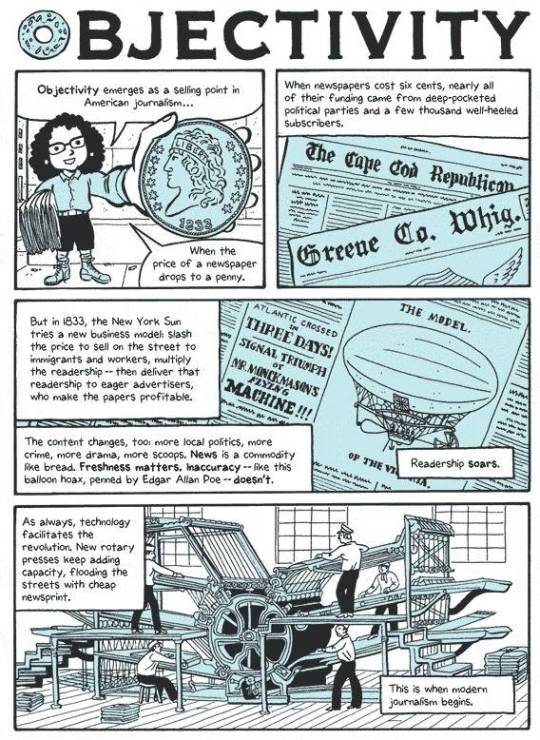


https://boingboing.net/2011/07/07/post-13.html
28 notes
·
View notes